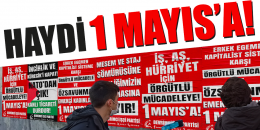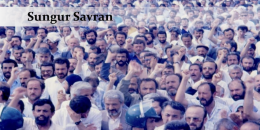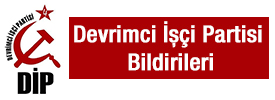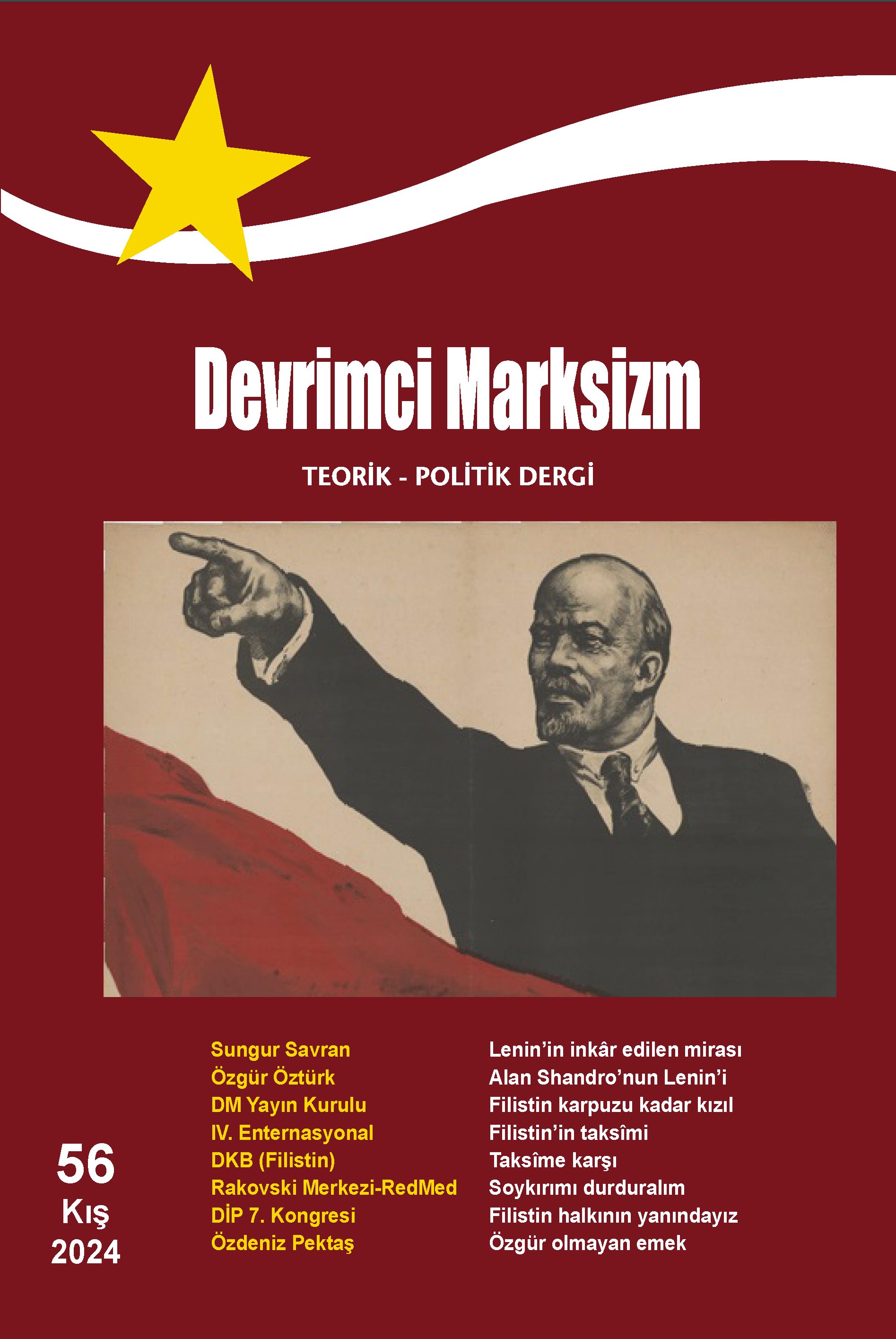2018: year of the resurgence of the third wave of world revolution

This is the second of two articles on the “yellow vests” movement and the world situation. The first article (“The ‘Yellow Vests’: La République en marche arrière”) was published yesterday.
2018 was a year of inflection.
A bolt out of the blue?
It is interesting that the uprising of the gilets jaunes is almost exclusively discussed within the French context. Of course, the fallout in other countries is mentioned from time to time, Belgium, Holland, Germany, Lebanon, most importantly Tunisia, where the vests have changed their colour into red. In Turkey the “yellow vests” are very popular within the working class and a true source of fear in government circles.
But what is remarkable is this: a great majority of leftists around the world are very much impressed by this peculiar movement, but do not pause to pose themselves the question “why now?” Knowing full well that most leftists have been in the grip of despair with respect to the future of the world ever since the collapse of the workers’ states in the late 80s and early 90s of the last century, this is surprising to say the least. How is it that revolution is suddenly in the air once again, its spirit and melody, if not its matter yet? No one, to our knowledge, is trying to answer that question.
The answer cannot be found within France alone, that is to say, its own domestic situation. In the first article, which was more narrowly on France, we did point out that that country has been in effervescence since spring 2016. So that is one answer regarding the roots of this impressive movement of the gilets jaunes. But that is not all. The French situation is organically linked to the international situation. France is not alone in experiencing an insurgency in 2018. Far from it.
12 insurgencies in 12 months
2018 was a year of inflection.
The year started out with popular revolts in two Muslim majority countries: Iran and Tunisia. The Iranian masses would commit the offence once again in June. (For Iran see the discussion by two of our Iranian comrades at http://redmed.org/article/rage-poor-iran and http://redmed.org/article/iran-revolution-meek, as well as the appeal to the Iranian people by our international current: http://redmed.org/article/iran-harbinger.) In fact, Iran was in effervescence throughout the entire year, with factory strikes, lorry drivers’ actions, teachers’ struggles etc. following upon each other’s heels. Tunisia, on the other hand, has really never calmed down since the 2010-2011 revolution, with the interior of the country, afflicted with extremely high youth unemployment and generalised poverty, keeping the flame of rebellion alive. (For Tunisia see the assessment by our French comrades of the Renaissance Ouvrière Révolutionnaire: http://redmed.org/fr/article/en-tunisie-les-masses-sont-dans-la-rue-contre-le-plan-dausterite.)
Romania followed suit. (See the discussion by a Romanian Marxist intellectual on our web site: http://redmed.org/article/romanian-protests-january-2018-and-what-do-we-learn-no-only-them.) Impressive crowds gathered for days on end in squares to protest corruption and economic turmoil, unfortunately poisoned by EU liberalism. They would come out again in due time. In not-too-distant Slovakia, tens of thousands of people came out in close to 50 towns and cities, some for a full month lasting from early March to the beginning of April in protest of the slaying of an investigative journalist, Jan Kuciak, and his fiancée, looking into corruption and organised crime. These powerful protests brought down the government.
It was Armenia’s turn in May, where tens of thousands stayed out on the main square of Yerevan close to a month. There the immediate question was a revolt against the Putinesque ambitions of the strongman of Armenia, Serzh Sargsyan, challenged by an outsider to the establishment, Nikol Pashinian, who is now comfortably in power, after having beaten his rivals in recent landslide elections. However, the background to all of this was the extreme poverty in which the Armenian people were thrown in the aftermath of the restoration of capitalism in the former Soviet Union (see our article here: http://redmed.org/article/armenian-uprising-absorption-or-change-course).
Jordan walked out in July. For more than a week the major square of Amman was occupied by crowds. The revolt was provoked by fuel price hikes and a planned tax law that would have seriously harmed the life standards of workers and labourers. This rebellion, unprecedented in the annals of the country, obtained all its important demands and additionally brought down the government of Hani Mulki (see our article on Jordan here: http://redmed.org/article/jordan-peoples-revolt-brings-down-government). Jordanians had to go out again in December for the new government did not keep its promises.
Iraq also erupted in July. It was the oil-rich province of Basra that led the way. The popular revolt then spread to other Shiite majority regions of the country. The Shiites being the dominant ethno-religious group in Iraq since the ouster and murder of Saddam Hussein by US imperialism, there were no sectarian (Shiite vs. Sunni) or ethnic (Arab vs. Kurd) issues involved, simply socio-economic issues of class, such as fresh water, electricity, unemployment, and general misery (see our article here: http://redmed.org/article/iraq-insurgency).
Latin America cannot be kept out of waves of insurgency and uprising. After the heady days of the late 1990s and early 2000s (Ecuador in 2000, Venezuella in 2002, Bolivia in 2003 and again in 2005), the continent had momentarily been lulled by left-wing governments of either “Bolivarian” (Chávez and his followers in other countries) or post-Leninist (Lula and the left-wing liberals) hues. 2018 was a year of inflection there as well. Nicaragua exploded in April and social unrest continued at least until September, with hundreds of casualties from among the insurgents. The current president and former Sandinista leader Daniel Ortega and his wife and deputy Rosario Murillo pretend to be still on the left, which is a shameless lie. The unrest broke out precisely because Ortega, at the behest of his imperialist patrons, trimmed the social security system, increasing taxes and slashing benefits to “cut costs”. So this was clearly a class question that no amount of rhetoric on his Sandinista past or his Bolivarian allegiance at present can hide.
Haiti, on the other hand, rose in July (and later again in December), immediately because of the price rise in gasoline and kerosene, but more fundamentally because the social situation is unbearable in that country, with extreme poverty, misery, and lack of jobs (see the article by our Argentine comrades on this web site http://redmed.org/article/popular-insurrection-haiti-tendency-latin-america).
December saw the return of popular rebellion to the Arab world, this time in its southernmost extreme in the African country Sudan. Events started in the Atbara province, well-known for its tradition of anti-colonial resistance and strong trade union organisation, and then boiled over to the capital Khartoum and 15 other cities and are still going on as of the writing of these lines. The object of contempt was again the imposition by the IMF of the lifting of subsidies for wheat and petrol. (See, in Turkish, https://gercekgazetesi.net/uluslararasi/sudanda-imf-ayaklanmasi).
In December as well, one of the countries of Europe where one would least expect mass struggles to erupt joined the fray. Lying in between Romania and Slovakia, Hungary was well-placed to be infected by the virus of revolt geographically, but totally unfit politically. This country has been under the yoke of its despotic president Viktor Orban for some time and the recent elections have given this quasi-dictator more than 50 per cent of the popular vote and almost two thirds of parliamentary seats. So it was quite a surprise to see tens of thousands of people, with the working class as the vanguard, walk out on the streets many times in two weeks in Budapest and several other major cities. The object of contempt was the new law that extends working hours by hundreds of hours annually and imposes additional measures of precarious labour. This new legislation is quite rightly called the “slavery law” by the masses. The movement seems to have subsided with Christmas and the signing of the legislation into law by Orban. We will have to wait and see what kind of elemental processes these two weeks will set off within the ranks of the working class. Let it be signalled that, among the 12 countries evoked in this article, Hungary is the only one where what has been experienced cannot be called an insurgency. But only people living in a country like Turkey (our case) can understand the significance of tens of thousands coming out on the streets for days on end in a country like Hungary. That is why we have added it in our list.
Need we, finally, mention France once again?
Resurgence of the third wave of world revolution
2018, thus, was a year of inflection.
The inflection points to a change in atmospheric pressure bringing in social unrest, popular rebellion, insurrection, and, most probably, when conditions are ripe, revolution. This wave of insurgencies observed in 2018 around the world is, in our opinion, but the continuation of a revolutionary wave that started with the Arab revolutions, in particular those of Tunisia and Egypt, that dominated the scene between 2011 and 2013. These were accompanied by popular rebellions (the “Squares Movement”) in other countries around the Mediterranean, first Spain and Greece in 2011 and on, then Turkey in 2013 (the so-called “Gezi uprising”). The Mediterranean became the new basin of the world revolution, as the caption running at the top of this web site says in so many languages. (RedMed, short for Red Mediterranean, itself is the product of this revolutionary wave.) The wave was not confined to the Mediterranean region or its hinterland (many countries of the Balkans experienced tremors in this period, most importantly the revolt in Bosnia-Herzegovina in 2014, a workers’ insurgency that brought together workers of all ethnicities torn at the hands of chauvinistic nationalisms). From the Occupy Wall Street movement to the Brazilian eruption of 2013, many distant countries became part of this vortex.
The major reason behind this multi-country effervescence is crystal clear. It is what we call the Third Great Depression, the long drawn out economic crisis, comparable to the first (1873-1896) and the second (1929-1948) Great Depressions, that set in with the collapse of the Wall Street bank Lehman Brothers in September 2008 (2007 for the United States). Great Depressions leave no buffer in the class struggle as all classes and national fractions of the bourgeoisie are struggling desperately for a solution to the profound crisis capitalism has thrown the world economy in. Hence all contradictions sharpen. Hence the rise of fascism (mostly of a proto-fascist form for the moment), hence the rise of a threat of a new world war as imperialism is trying to bring to its knees the two giants of the old world of workers states, China and Russia, and hence the rise of class struggle, popular rebellion and revolution. All these were foreseeable for a Marxist grasp on the world situation. (We are not going here into the grave role played by the post-Leninist left in paving the way to the post-fascist rise in the wake of the collapse of the bureaucratically degenerated states. For this see our “The Great Challenge: winning the working class back from ideological irredentism”, Revolutionary Marxism 2017, http://www.devrimcimarksizm.net/en/sungur-savran-great-challenge-winning-working-class-back-ideological-irredentism.)
The three waves of world revolution
This was the third wave of world revolution under the capitalist mode of production, the third wave since the onset of the age of proletarian communist revolutions. World revolution is not solely an abstraction based on the Marxist analysis of the integration of the world economy under capitalism. That analysis is wholly correct, of course. But world revolution is also a concrete lived reality. The first wave of world revolution was set off by the greatest proletarian revolution to date, the October revolution of 1917. In its footsteps erupted the German revolution (later to become the Bavarian one), the Hungarian one, the consigli di fabbrica of Turin in Italy, the Red Clydeside of Scotland, and the civil war of Finland. That wave then turned into the anti-colonial revolutions of the Middle East, a vortex that drew in, for several years, Egypt, Iraq, Turkey, Syria and Palestine, not to mention the anti-imperialist military struggles in Iran and Afghanistan. It then leapt over to China (1925-27) and other Asian countries. The revolution in Spain was possibly the swan song of this first wave of world revolution. (The Latin American experience of the 1930s should also be included in this overall picture.)
The second wave came with the struggle against fascism in Europe and against Japanese militarism in Asia, no less cruel, during the Second World War. Revolutionary fever gripped the Mediterranean countries of Europe, extending all the way from France to Greece. In most countries, power was not taken simply because of the collusion of the Stalinist leadership of the Soviet Union with the imperialist powers and the servitude of the leadership of the communist parties of Europe to the Soviet bureaucracy. In Asia, the communist parties were less slavish and took power successively in North Vietnam, China and Korea (later North Korea). We refrain from going into a discussion of other countries (such as the case of Indonesia and India, topics that must be analysed much more seriously than before).
The Tunisian and Egyptian revolutions were the harbinger of the third wave of world revolution.
(We will not go into the question of why, despite the very clear international, even worldwide resurgence of struggles and very real experiences of revolution for instance in Portugal, we do not count the 1968 period as still another period of world revolution. That would take us too far away from the object of this article.)
The parliamentary moment
With the defeat suffered by the Egyptian revolution at the hands of General Mohammed al Sisi in 2013, the first phase of this revolutionary wave closed abruptly. This defeat eliminated the hope of swift victory through revolution for the masses around the world. But it did not, and could not have, eliminated the elementary forces that pushed the working class and the masses towards sharper class struggle for survival in the face of the assault of the international capitalist class under the conditions of economic depression that had gripped the entire world. Thus the drive for survival started to look for other channels. This set off the parliamentary moment of the third wave of world revolution, in some of the countries where that kind of parliamentary struggle might be possible .
Phenomena as disparate as the spectacular success of Bernie Sanders in US primaries, the rise of Jeremy Corbyn to the leadership of Labour in the UK and his success in subsequent elections, the rise to power (and subsequent betrayal) of Syriza in Greece, the formation and early success of Podemos in Spain, the further rise of the Untied Left in Portugal (and even, to a limited extent, the success in the June 2015 elections of the HDP, the People’s Democracy Party, in Turkey) all attest to this search for a more gradual and piecemeal manner of struggle against the rule of capital by the masses. So, as a counterpoint to the rise of proto-fascism from the European elections of 2014 on, parliamentary forces to the left of the classical version of social democracy also displayed a clear tendency to grow. This parallel rise of the extreme right and parliamentary left now finds its mirror image in the double victory of Bolsonaro in Brazil and of López Obrador in Mexico, the two most populated countries of Latin America.
It is obvious that even the most uncontested victories by these forces would not be able to bring much to the working class and labourers of any country. So we are not at all drawing attention to the “parliamentary moment” as another kind of solution to the problems of the masses. We are only pointing out that the will of the masses to struggle has not withered away together with the decline of the “moment of insurgency”.
But a “parliamentary moment” within a revolutionary wave is a living contradiction that cannot survive long. The inflection of 2018 is suggesting to us that that contradiction is maturing. The world is turning once again to insurgency.
Some very clear conclusions
So as not to allow those who despair of revolution to try and shut their eyes to the empirical data, let us summarise very clearly the balance sheet of 2018 from the point of view of the class struggle of the working masses.
- There were at least twelve mass movements, eleven of them clear instances of mass uprising, which indicate a willingness on the part of the masses to struggle using classical revolutionary methods (although none of these movements can yet be characterised as revolutions).
- Of these twelve movements an overwhelming majority (with the clear-cut exceptions of Romania and Slovakia and the ambiguous position of Armenia) erupted on strictly socio-economic bases, were, hence, typical examples of class struggle.
- Many in the list went into struggle even as a result of the same triggering cause: the rise of fuel prices!
- Most were situated in the same broad geography of the Mediterranean basin and its hinterland of the Balkans and Eastern Europe. This geography happens to be identical with the geography of the first phase of insurgency of the third wave of world revolution (different countries, same overall contradictions).
- It is not true that these insurgencies are of no use. Many governments were brought down in the turmoil.
It is difficult not to conclude from all this that the world is slowly but surely entering a new phase of insurgencies.
This is the inflection observed in 2018.
Coda
It is true that the third wave of the world revolution has not offered a single example in which the dynamics of a revolution or a popular rebellion were consummated. Even Tunisia, which of course achieved formal, bourgeois democracy in place of a one-man dictatorship that had lasted at least for 23 years, if not longer, did not exhaust the possibilities that the forces of the revolution, mostly proletarian, held in store. (That is why, be it said in passing, the Tunisian revolution is an unfinished revolution.) The overall balance sheet is even worse for other countries. Of the many reasons, some general and some country specific, the decisive one is the absence of revolutionary proletarian parties. So the lesson to draw from the failure of most of these movements should not be despair, but the need to build revolutionary parties with roots in the working class and a revolutionary International.













